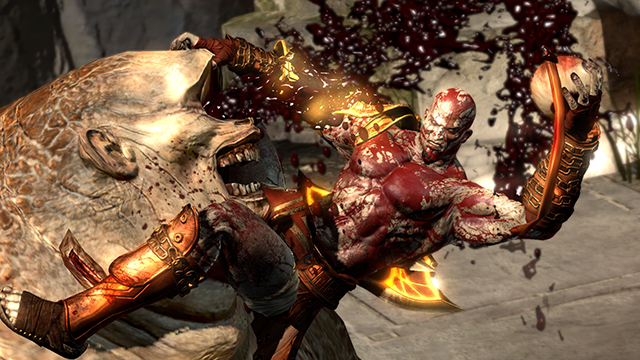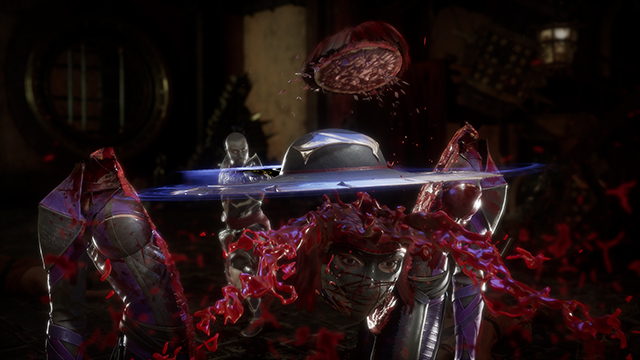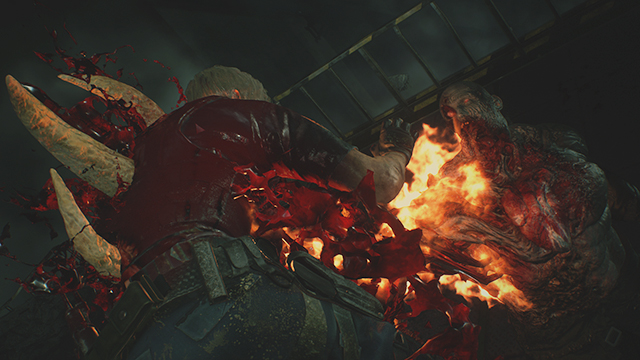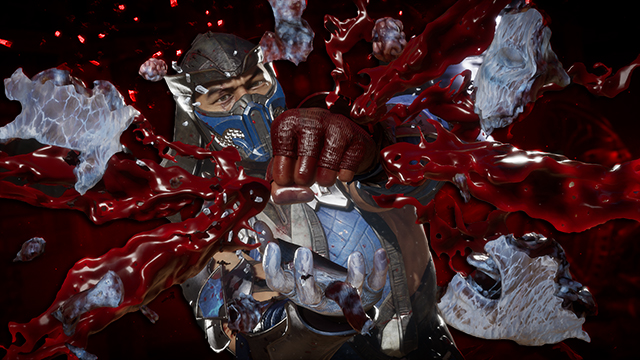It’s the battle cry of concerned mothers and video game doubters the world over. And now, in the wake of repeated shooting tragedies across the United States, the clarion call from policy makers and politicians is that video games cause violence. The recent events in the U.S. are deeply tragic and draw focus once more to a dark and confusing aspect of American society that we are still struggling to understand. However, there is a real danger in scapegoating an entire art form and placing the burden of responsibility on it for acts of terrorism and mass violence. There’s little doubt that video games provide depictions of mass violence in a different, often more visceral mode than other art forms, and in playing violent characters, provide players with an opportunity to role-play as violent, sadistic people. But role-play is not preparation, as all of us probably know. The ability provided by video games to engage with violence and gore without perpetuating it could actually be an important psychological experience for many people, if we consider the abject, as termed by Julia Kristeva.
What is the abject?

It’s easy to deride video games and the subculture around it as something dorky and unintellectual. Whether you’re busy feverishly scribbling fan art of Bowsette, and making surreal memes about Half Life 3, it’s too simple to amass a reputation as “the weird place on the internet” at the best of times and a fetish dungeon at the worst. However, video games are an art unto themselves, and with a little thought and respect, it’s a simple matter to delve into them and find the psychological intrigue present in all worthwhile art. And so, the abject.
It might seem lofty, but the abject is a theory that explains so much about the human love for horror and gore. It was coined by Julia Kristeva, a Bulgarian-French philosopher, and literary critic, and expanded upon in her amazing essay The Powers of Horror. Kristeva posits that the quality of the abject is “that of being opposed to I,” or “the place where meaning collapses.” This is neatly parceled as being uncanny; those things which occur occasionally in our lives which repel us: corpses, vomit, excrement, a particularly gory or gruesome accident, or anything which blurs the boundaries of the human body. And so, it’s clear to see how video games are a huge depository of the abject in a way that Kristeva couldn’t have imagined upon writing her essays. In video games more so than any other form of media, we are presented with the opportunity to explore the abject, and our joy in this is proven economically by studios creating more and more visceral and abject games to fulfill that need.
The abject object of video games

Kristeva points out that corpses and images of dead bodies are examples of “death infecting life” and bring us to the borders of our humanity and selfhood. But there is a strange joy in this if you’re willing to suspend your disbelief. In seeing death, we are filled with catharsis and relief that we are not the dead ones. Confronting images of death might provoke a physical reaction in us — fear, sweating, in extreme cases, even vomiting — but these physical responses are yet more proof that we still live. And this is the joy of the abject, and one of the reasons that we seek it out in games.
In games, if you cause death to other characters, then it’s proof that you are not dead. Yes, there may be somewhat of a just cause to fear that viewing death in this way desensitizes audiences to real death, but that’s such a simple and incorrect way to look at it. The classic and oft-spoken of examples of abjection in video games are Silent Hill, Bloodborne, and Rules of Rose. In these cases, the catharsis comes with overcoming the abjection so that it no longer owns you. You beat the hideous boss monster. You overcome the atrocities which you commit as a character to bring the game to a conclusion. You cast out the abjection, and become more. And if you do think you’re being desensitized to video game violence, you’re likely not.
Another important thing to remember about experiencing the abject in gaming, and perhaps why violent and gory video games are so popular is that video games give you a safe space in which to pursue your morbid fascination. You can walk away. At any point, you can “nope” out, shut the screen down, and never go back to the game. It’s a completely risk-free chance to explore and flirt with the human fascination with the abject.
The abject gamer

The safety of exploring violence in games can’t be underestimated, even if the images which may be seen in the medium would raise the eyebrows of conservative lawmakers and overly concerned parents. They are undeniably horrible, and having your character maraud around and commit atrocities like the torture sequence from GTA5 might genuinely turn your stomach. It’s even amusing to see how many people have searched for ways to avoid this sequence. But here’s the key facet: role-play is not preparation. Because you play a hardened criminal with perverse tastes who commits murder does not mean that you are preparing yourself for that role in real life. Wanting to experience the abject is normal, and human, even if it’s a side of humanity that makes us uncomfortable. It is not games which commit these acts.
Emily Buck makes an excellent point when she notes that the overlap between recent mass shooters and video game players, with both being generally young, disaffected white males. But correlation is not causation, and similarities are not proof. Games can be popular, violent, and played by good people as well as those prone to acts of mass violence and that the blame should be put on actions rather than fancied prompts towards violence. The figure of the disenfranchised, solo, radicalized white male who plays violent and abject games and tends towards violence is the bogeyman of conservative thinkers seeking an easy target. And of course, the guns are the common element in all the shootings; a big part that can be pinned on inconsistent and often lax gun safety laws held up by ill-informed lobbyists. But that is another topic entirely.
Like a free radical, without family or certain societal elements like religion or group with which to bond, this figure is seen as floating harmfully through various sectors, clinging to dangerous alt-right notions and pursuing violence as a means of expression. It’s too easy to blame violent video games or art form as the reason atrocities happen, but enough is enough. Why do people kill? Thousands of reasons, sadly but the influence of video games is not the hard and fast answer to the question, as those in power might like to pretend. Abjection is standard; violence is not.







